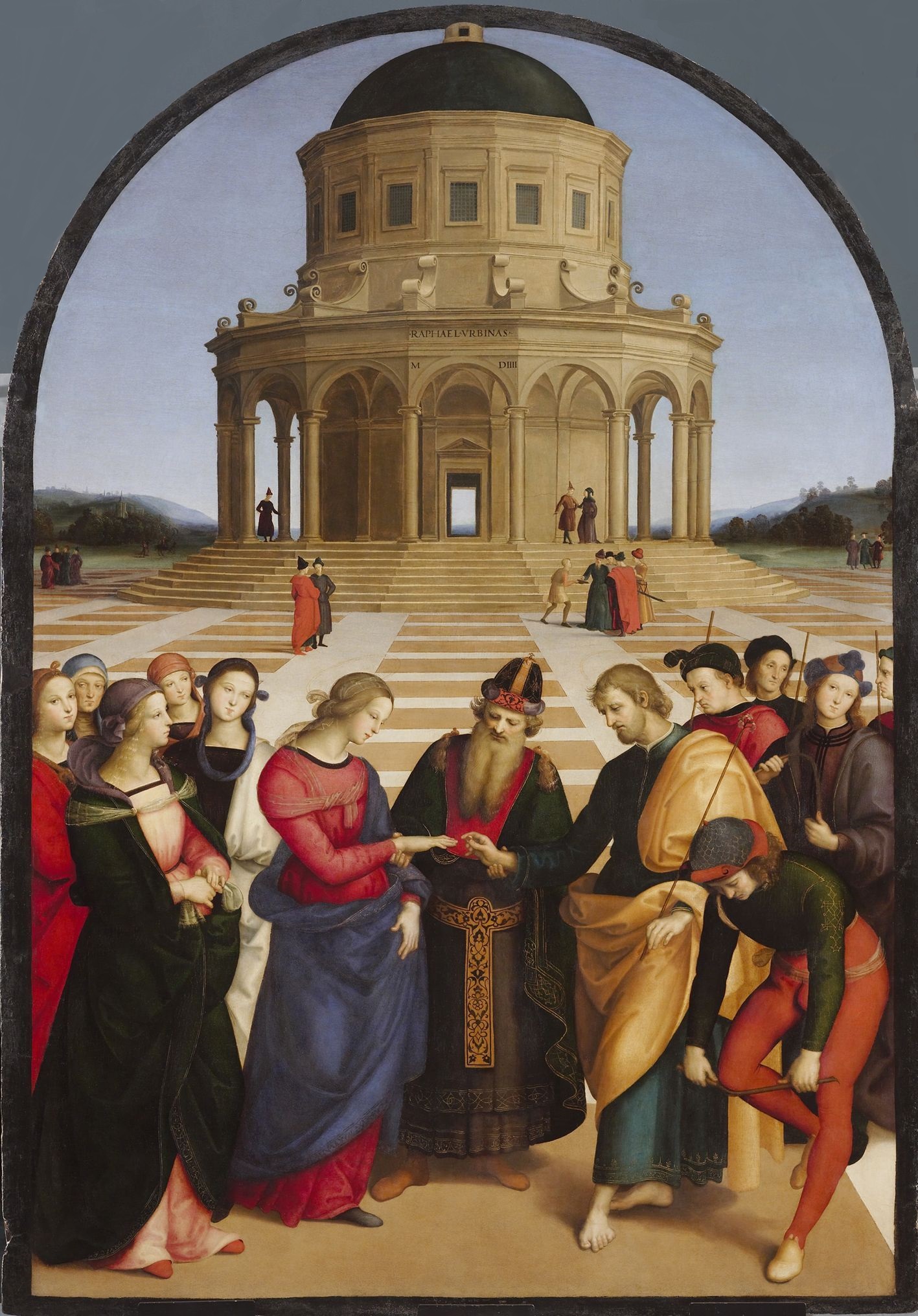The Marriage of the Virgin
Story
The painting, dating from 1504, was moved from the Church of San Francesco in Città di Castello to the Pinacoteca in 1805. Raphael painted the Marriage of the Virgin having in mind the altarpiece with the same subject by Perugino, which is conserved at the Musée des Beaux-Arts in Caen. Raphael took inspiration from it, using its composition structure and iconography to obtain a result of incredible and unachievable perfection.
Infrared reflectography reveals a dense set of lines converging on the temple door. These lines define the image perspective system, fully abiding by the recommendations contained in the De prospectiva pingendi (On the Perspective of Painting) by Piero della Francesca. Thanks to this artifice, the temple becomes the visual centre of the composition. The figures are placed in a semicircle, and their position balances the convex line of the architecture, which has been painted with such a precision that scholars have speculated the existence of a wood model.
All elements are connected to each other by mathematical relations of proportion and placed according to a clear, logical hierarchical order, while Perugino had only juxtaposed the composition elements within a correct perspective structure. The realisation of this coherent organism perfectly demonstrate Raphael’s vision. He intended beauty as an abstract order of geometrical representation and thought that artists had the duty of “making things not as Nature makes them, but as Nature should.”
